Research on Norman & Ernest Spittle and Gustav Stickley
In a previous news article I wrote about the link between Norman and Ernest Spittle, Art Fittings Ltd and Gustav Stickley.
The recent purchase of a copper tray by Norman and Ernest Spittle has led to further research highlighting the extent to which the English firm helped Gustav Stickley establish some of his most iconic metalwork designs.
The early story of Norman and Ernest Spittle is still not very clear. In the 1891 census their father was described as a boot maker. The elder brother, Ernest, was 22 and a jewellery factory manager. Norman was 16, a draughtsman and possibly apprenticed to an Art Metalworker. The brothers formed the firm of Norman and Ernest Spittle around 1897. Certainly in the 1897 Kellys Directory, Norman Spittle is described as an art metalwork designer. The 1899 Kellys Directory shows both Norman and Ernest Spittle as art metalworkers.
In 1899 the firm starts to get noticed by influential periodicals of the day. The Artist has a very complimentary article featuring the work of the brothers. In the same year, The Studio shows a number of the firm’s designs. Interestingly, the Studio states that the designs were by Norman Spittle so it seems likely that Norman was the key designer for the firm at this time.
The firm appears again in The Studio in 1901 where the two copper and iron fire places they exhibited at The Leeds Arts and Crafts exhibition were again praised.
Tragedy struck in 1902. Norman Spittle died in January 1902 at the young age of 27. I have yet to find out what happened to Norman but this must have been a terrible blow for Ernest. Not only did he lose his brother but he also lost his business partner and a key designer. The firm appeared to be on the cusp of commercial success. Sadly in March of 1902 the firm was mentioned in the Western Daily Press as the designers and makers of the fireplace, fireplace implements and electroliers in the rooms being specially decorated for a Royal visit to Bristol. Norman didn’t live to see the room finished.
Ernest clearly carried on the firm and in 1902 it appears that he started the next chapter with the opening of the Art Fittings Limited shop in Westminster, London. The link between Norman and Ernest Spittle and Art Fittings Limited is not clear-cut but there is substantial evidence that it was a London based shop purely for selling the work of Norman and Ernest Spittle. Catalogues under both names were issued in around 1905. The Art Fittings catalogues have very similar typography and the items being sold all appear in the Spittle catalogues of the same period. In October of 1903 the Bournemouth Graphic newspaper included a small advert that shows both Art Fittings Ltd and Norman and Ernest Spittle together advertising an exhibition at the Grand Hotel in Bournemouth.
Art Fittings Limited appears to have been relatively successful. It advertises quite heavily in The Studio between 1902 and 1904, with most of the metalwork shown also appearing in Spittle catalogues.

Ernest had a further problem in 1903. The newspapers of the day all reported on a legal dispute between Art Fittings Limited and Soldiers’ and Sailor’s Help Society. The charitable organisation was set up to help war veterans of the day. Unfortunately they had opened an office in the same building (Albert Mansions) in Victoria Street, Westminster, where Art Fittings Limited had their showrooms. Art Fittings Limited lodged a complaint because there were long queues of men outside their showrooms and there were frequent altercations. The case was eventually settled and the charity moved out of the building but this no doubt impacted the success of the firm.
It is well documented that Gustav Stickley visited London in 1903. It is highly likely that Gustav Stickley visited the Art Fittings showroom in Westminster. We know he purchased at least 17 of designs by Norman and Ernest Spittle and we start to see these show up in a number of places.
In the spring of 1903 Stickley held his Arts and Crafts exhibition in Syracuse and then Rochester, New York. Fortunately there are a number of photographs from the exhibition that featured the Art Fittings Limited metalwork bought in London. A copper tray, firescreen, cigar box, coal bucket, and charger, all made by Norman and Ernest Spittle, can be easily identified. All appear in their catalogues from this period.
Further items made by Norman and Ernest Spittle can be identified in the May 1903 edition of The Craftsman. The published plans of the The “Craftsman House” have yet more Spittle designs on display. Chargers, newel post lamps, fireplaces and the particular tray in question are all shown in illustrations of the house. Design No. 4363 in the Norman and Ernest Spittle catalogue, circa 1905. It was described as a hand beaten salver available in Copper, Brass or their patented alloy, Pewtal. Additional images of the tray in both brass and Pewtal shown thanks to Ian Milne.
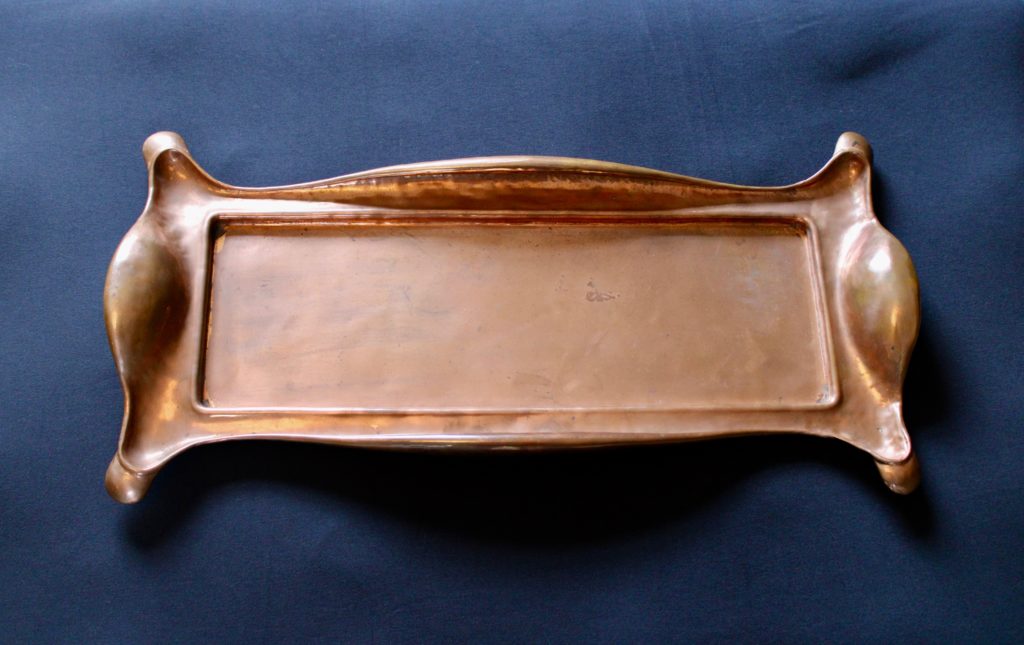
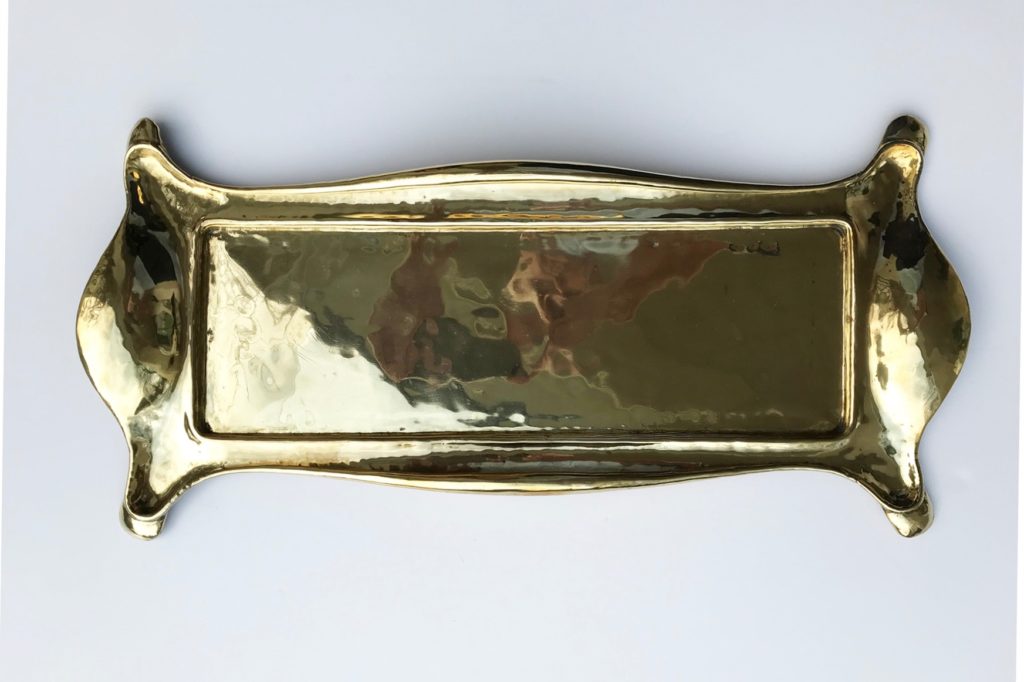
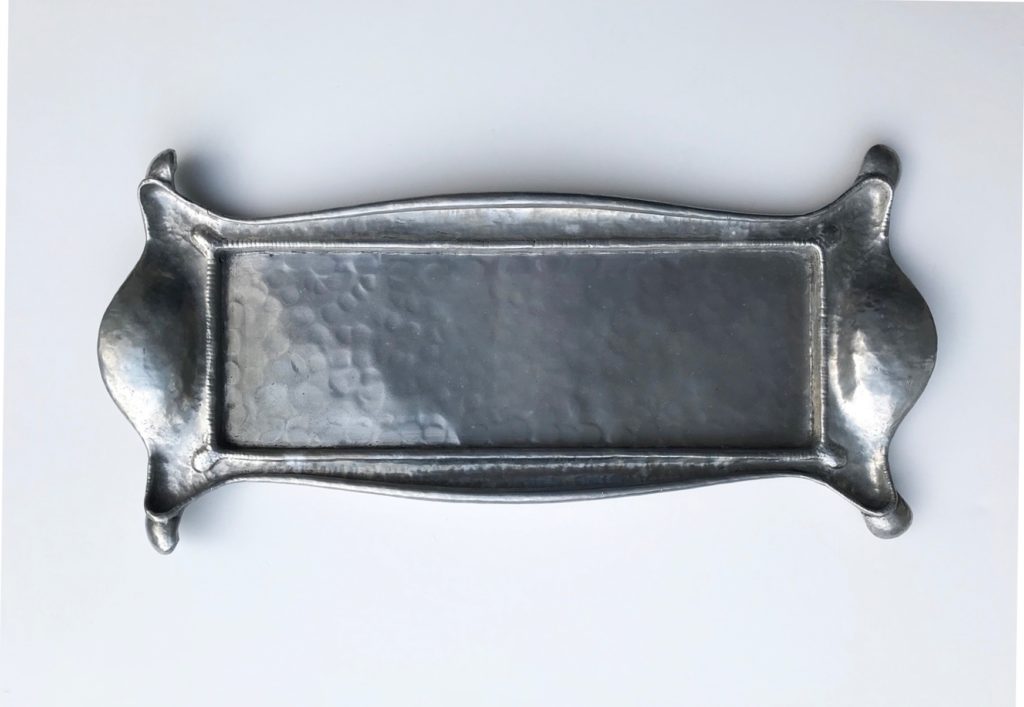
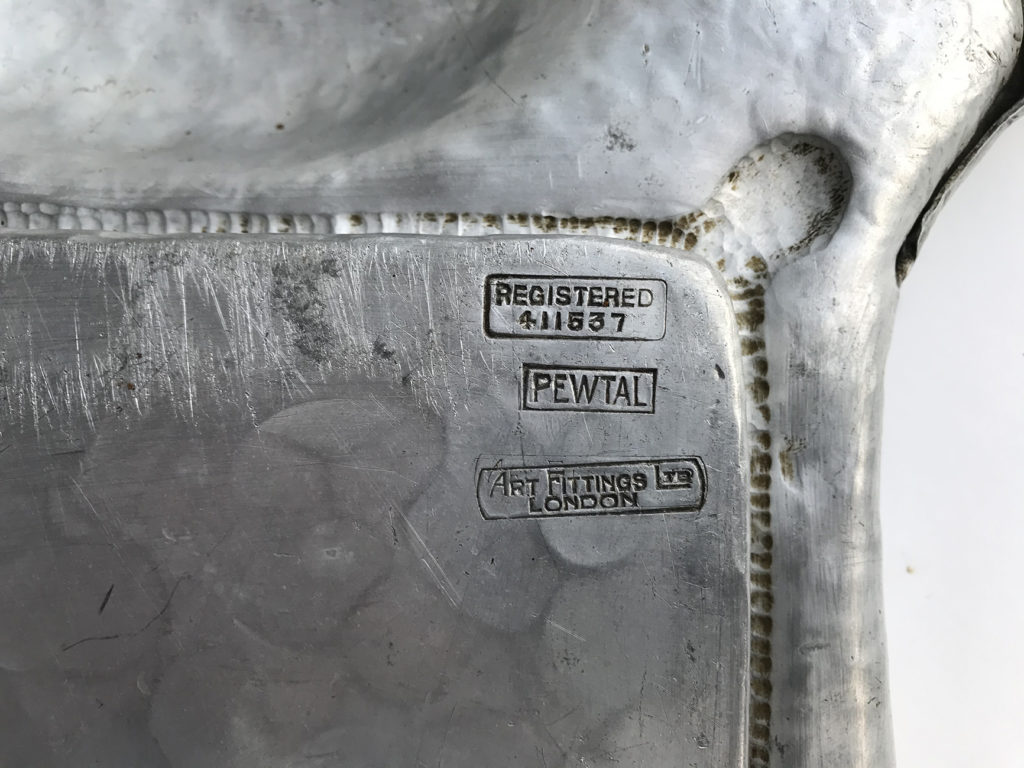
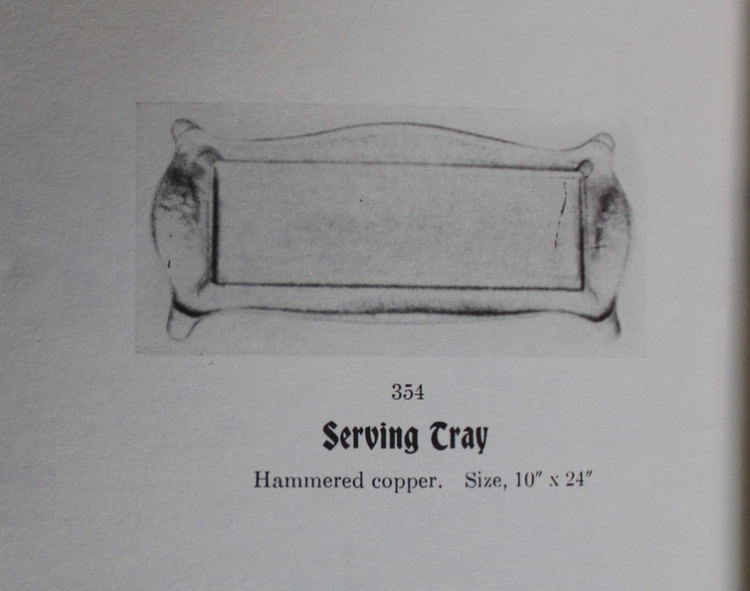
Many of these designs, looking identical for the most part, appear in Stickley’s own metalwork catalogue of 1905. The tray in hammered copper is design no. 354. Other designs are direct copies of Spittle pieces – wall plaque (No. 345), coal Bucket (No. 350), umbrella holder (No.273), cigar box (No.342), ash tray (No.271), and wall plaque (No.344).
Many of these became iconic designs for the Stickley Workshops. The copper tray (No. 354) was even made by other American makers with links to the Stickley workshops, namely the Onondaga Metal Shop and the Benedict Art Company!
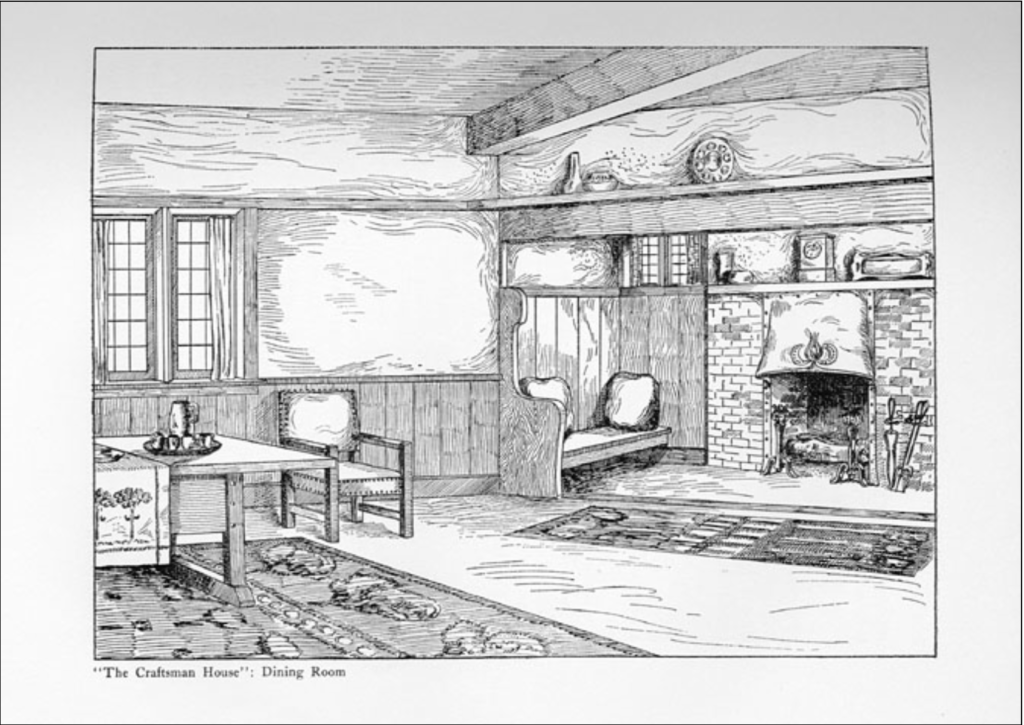
It’s increasingly clear that English Arts and Crafts metalworkers contributed significantly to the early designs of Gustav Stickley metalwork. It is a shame that Norman Spittle did not live long enough to see the impact of his designs in America and I often wonder whether Ernest Spittle even knew the extent to which the firm’s designs were being copied. I’d be very interested to hear from anyone who can add to this evolving story.